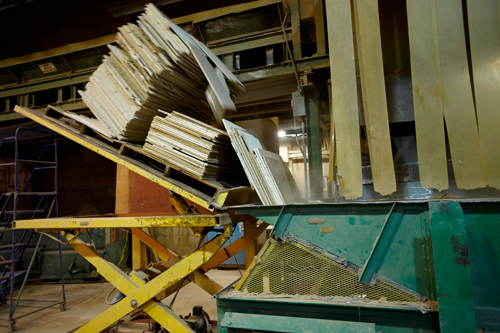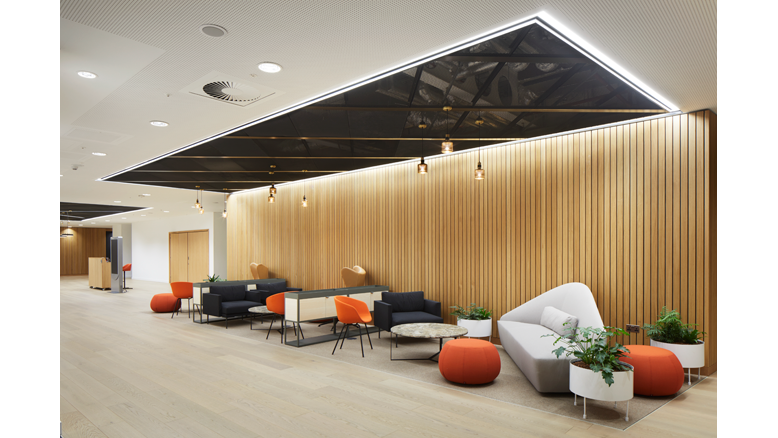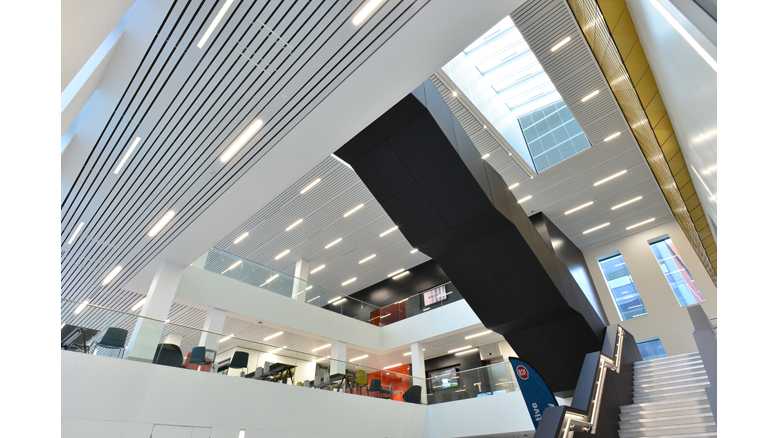Manufacturer goes online for the latest in its series of product catalogues.
Armstrong Ceiling Solutions has released its new mineral ceilings and suspension systems catalogue as an online flip book for ease of use and on-the-go accessibility.
The 106-page catalogue provides complete technical and product information on the manufacturer’s market-leading mineral ceilings and full system solutions, as well as its range of floating ceilings and options for specific applications – arming specifiers with all the information they need to make educated design decisions when specifying ceilings for new-build and refurbishment projects.
Kicking off with a product selector performance table that makes selection of acoustic mineral tiles super-simple, this ethos is carried through with a suspension systems product selector for quick and easy selection of compatible grid systems and concludes with an acoustical technical glossary detailing all the necessary acoustic performance considerations.
The catalogue reinforces Armstrong’s 150-year pedigree with information on the manufacturer’s smooth and white Ultima+, Perla, Sierra, Optima, Neeva and Plain ranges as well as Dune eVo, the first tile and grid system to gain Cradle to Cradle® Certified accreditation. All are available in multiple acoustic densities for total acoustic control and design flexibility. Classic tiles showcased include Fine Fissured and decorative tile options comprise the Colortone range.
Cradle to Cradle certification is explained along with Armstrong’s environmental commitment and pioneering ceiling recycling programme which saves contractors money by diverting waste from landfill.
Mineral solutions for specific requirements include anti-microbial Bioguard, Clean Room certified Parafon Hygien and Clean Room FL, and humidity-resistant Hydroguard and Ceramaguard while suspension systems include one resistant to corrosion.
Floating ceilings which open up an almost endless range of dramatic design possibilities and provide greater sound absorption than that of a traditional wall-to-wall ceiling include the Axiom range of square, rectangular, circular and curved canopies.
Suspension systems detailed within the catalogue include exposed and semi-concealed solutions for high design requirements, as well as those suitable for the integration of services, high load levels and special requirements such as corrosion, seismic resistance and Clean Room compatibility. Perimeter trims and accessories include edge profiles and transitions, blind boxes, and angles and channels for ultimate design flexibility.
As part of the objective to make the catalogue as informative as possible, it features an at-a-glance cleaning matrix, reaction to fire advise and references to the manufacture’s recommendations for installation and maintenance. More detailed information on these can be found on Armstrong’s new website www.armstrongceilingsolutions.co.uk.
The new mineral ceilings and suspension systems catalogue also updates readers on Armstrong’s social media presence via Twitter, LinkedIn, Instagram, Pinterest and YouTube.
The catalogue is available on https://www.armstrongceilingsolutions.co.uk/en-gb/ceiling-tiles/product-catalogue








